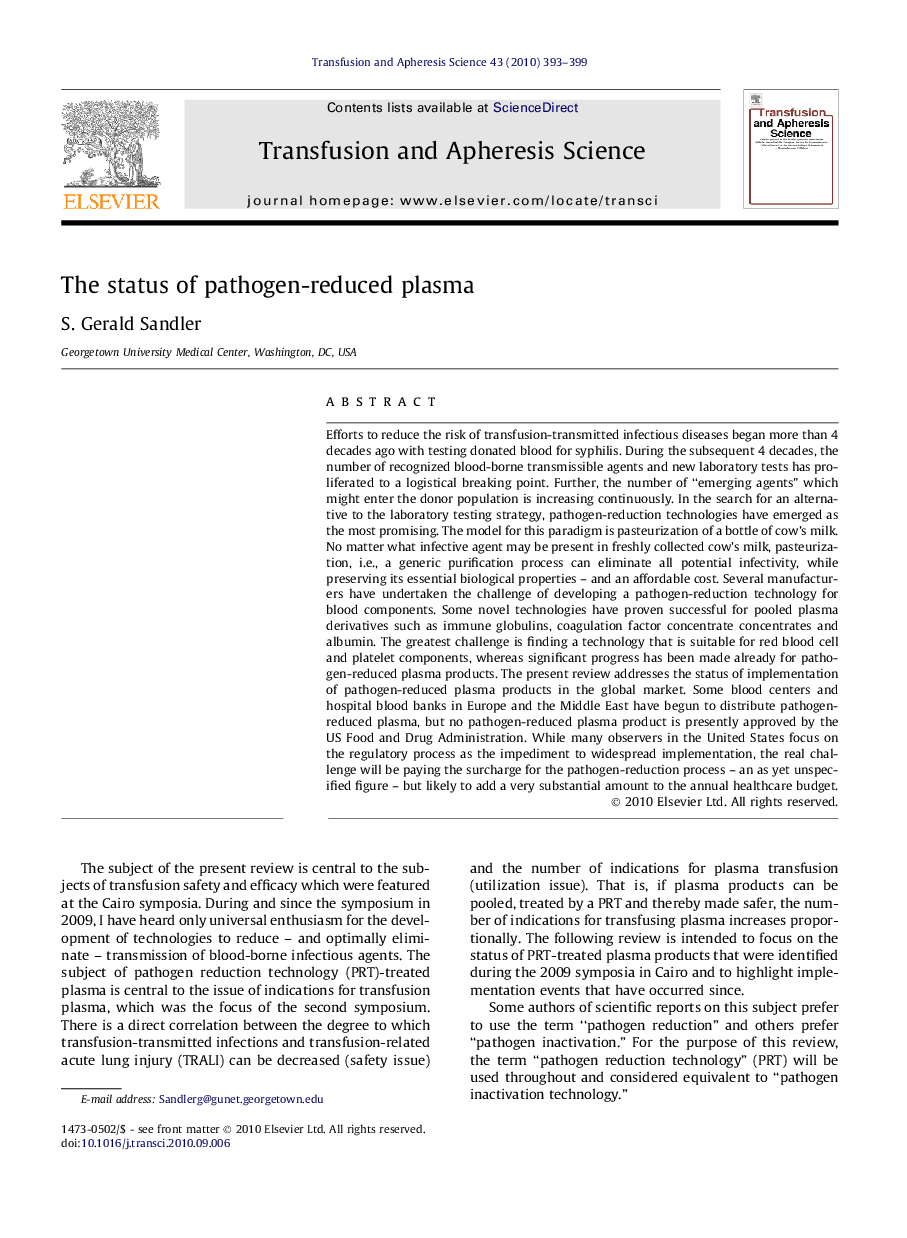| Article ID | Journal | Published Year | Pages | File Type |
|---|---|---|---|---|
| 3335811 | Transfusion and Apheresis Science | 2010 | 7 Pages |
Efforts to reduce the risk of transfusion-transmitted infectious diseases began more than 4 decades ago with testing donated blood for syphilis. During the subsequent 4 decades, the number of recognized blood-borne transmissible agents and new laboratory tests has proliferated to a logistical breaking point. Further, the number of “emerging agents” which might enter the donor population is increasing continuously. In the search for an alternative to the laboratory testing strategy, pathogen-reduction technologies have emerged as the most promising. The model for this paradigm is pasteurization of a bottle of cow’s milk. No matter what infective agent may be present in freshly collected cow’s milk, pasteurization, i.e., a generic purification process can eliminate all potential infectivity, while preserving its essential biological properties – and an affordable cost. Several manufacturers have undertaken the challenge of developing a pathogen-reduction technology for blood components. Some novel technologies have proven successful for pooled plasma derivatives such as immune globulins, coagulation factor concentrate concentrates and albumin. The greatest challenge is finding a technology that is suitable for red blood cell and platelet components, whereas significant progress has been made already for pathogen-reduced plasma products. The present review addresses the status of implementation of pathogen-reduced plasma products in the global market. Some blood centers and hospital blood banks in Europe and the Middle East have begun to distribute pathogen-reduced plasma, but no pathogen-reduced plasma product is presently approved by the US Food and Drug Administration. While many observers in the United States focus on the regulatory process as the impediment to widespread implementation, the real challenge will be paying the surcharge for the pathogen-reduction process – an as yet unspecified figure – but likely to add a very substantial amount to the annual healthcare budget.
